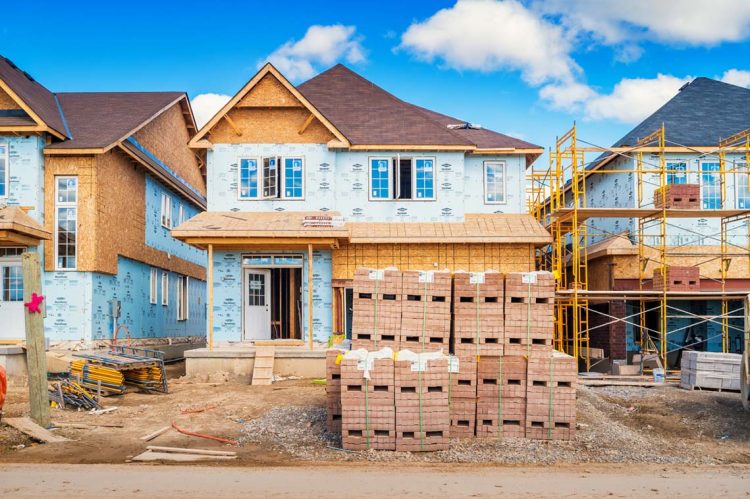A recent Black Knight, Inc. report has delved into the extent of the inventory crisis that has continued to plague the housing market. Despite the recent progress in increasing the supply of homes for sale, the report suggested that those developments aren’t good enough to correct the dearth of homes for sale.
In a recently released white paper titled, “Trending Toward Zero: Black Knight Home Price Trends Data Shows Single-Family Home Inventories Remain Near Historic Low,” Collateral Analytics, a division of Black Knight, delved into property-level data from the top 100 metros in the U.S. to see just how tight inventories have become nationwide. The paper highlighted factors contributing to historically-low inventory levels, which have become a key driver in the growing housing affordability crisis facing buyers nationwide.
That was evident in Black Knight’s latest Mortgage Monitor Report, which found that housing affordability hit its worst levels in 16 years, despite a deceleration in price appreciation for single-family homes.
The gradual decline in the remaining monthly inventory serves as the primary driver for the state of the market. The supply of homes for sale has steadily declined since the late 2000s. That drop was exacerbated by the pandemic and buzzing market activity that followed.
According to the report, the monthly supply was reduced to around two months nationally, while some markets are trending toward zero.
The report attributed the current state of the market and the lull in the inventory of homes for sale to a mix of factors, including persisting supply chain issues that have plagued home builders.
With inventories so low, selling a home in today’s market has become relatively easy given the current state of inventory nationwide. However, the report indicated that some would-be sellers remained sidelined rather than risk selling a home and being stuck without a home.
Key findings
- 96% of the markets analyzed were considered “hot” or “strong” in terms of overall market strength.
- Home prices in April were up more than 10% year-over-year in all of the nation’s 100 markets.
- Existing single-family home inventory has hovered around two months’ worth of supply nationwide since 2021.
- Monthly Inventory levels have gradually declined since 2012—dropping under six months to the current two-month collection in 2022.
- Factors contributing to the current state of the market are:
- Increased informational efficiency
- Accommodating fiscal policy
- Remote work
- Institutional investors
- Restrictive zoning
- Supply chain
- Rooted sellers
The takeaway:
“Historically, markets maintaining four to six months of inventory would have been defined as being in equilibrium,” said Michael Sklarz, managing director of the Collateral Analytics division of Black Knight in the report. “Not only have overall months of remaining inventory (MRI) figures converged toward less than two months in recent years, but higher-priced homes—which have historically required substantially more time to sell—have been in increasingly short supply.”
“We don’t know how long the housing market will remain in a state of seller paralysis. But to the extent that low inventories become the new normal, buyers will need to enhance their search and offer strategies. Agents and brokers will need to become adept at using technology—on both sides of the purchase transaction—to ensure they are providing buyers and sellers with the most current and accurate information.”
“Inventory has been falling for multiple years due to homebuilding below the normal amount required for over a decade,” Lawrence Yun, chief economist for the National Association of REALTORS®, tells RISMedia. “But finally, later this year, inventory may no longer decline (on a year over year basis) as demand is cut back from higher mortgage rates and homes sit on the market a tad longer. The most acute housing shortage is likely to be this year, and we expect to see inventory levels rise next year.”
“With few exceptions, the housing market has experienced a broad, generally nationwide decline in the number of homes for sale since 2011,” says Danielle Hale, chief economist for realtor.com®.
“From 2013 to 2015 and again in 2018 to 2019, the market saw the number of homes available for sale increase as mortgage rate surges tempered homebuyer demand. However, the big picture trend has been toward lower for-sale housing inventory. While the title is provocative, I don’t expect to see zero inventory, and there are signs that the market is already charting a new trend. Our May Housing Trends Report showed that for the first time in three years, the number of homes available for sale grew on a year over year basis, as rising mortgage rates caused some home shoppers to pause their searches and rising home prices enticed more homeowners to try to sell than we saw at this time last year.”
“Although the housing market remains far from balanced in most areas across the country, this new trend is a step in the right direction and should eventually help bring about more balance. Put another way, it’s not going to spell an immediate end to the symptoms of low inventory, such as fast-rising prices and homes selling as soon as they come up for sale, but as inventory rises, it will alleviate the sense of scarcity that has driven those outcomes, eventually calming the frenzy.”












